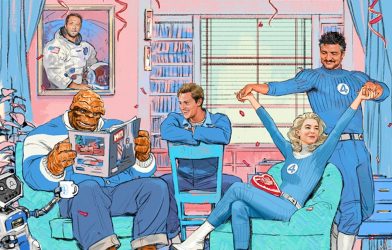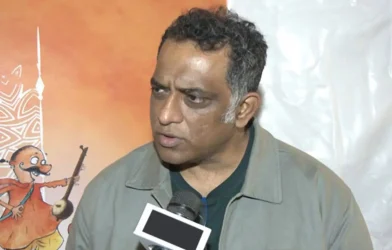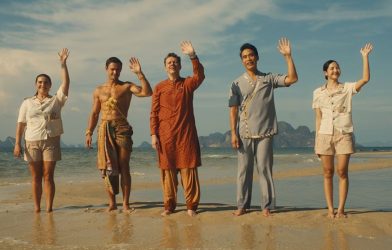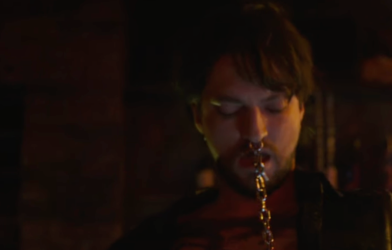
Inside Out 2 and The Wild Robot
Everett (2)
As footage from DreamWorks Animation’s fall feature The Wild Robot screened at the Annecy Animation Festival in France this week, big laughs — and later, audible sniffling — could be heard throughout the packed auditorium. With a passionate standing ovation immediately breaking out after the final scene, the audience reaction was a vote of confidence for the project that features the voice talents of Lupita Nyong’o and Pedro Pascal and hails from director Chris Sanders.
Two days from now, Pixar’s Inside Out 2 — the sequel to the $850 million-grossing 2015 film — screens at Annecy on the same day it hit theaters nationwide. Box office tracking see it poised for a solid box office bow potentially north of $80 million, with The Hollywood Reporter’s review calling the film “a home run.”
It’s all part of a week bringing some much-needed rays of hope to the world of animation, a space that has been battered by layoffs, a contraction in the streaming landscape, a few box office misses and growing concerns surrounding AI.
“It’s a more challenging year overall for animation,” says producer Nicole Sorochan, whose film The Worlds Divide premieres at Annecy and is seeking distribution. “But this will be our team’s first time to Annecy, and attending has literally been No. 1 on our director’s list for a long time. His dreams are happening right now.”
Even before Inside Out 2, Pixar had been in the spotlight as the company laid off 14 percent of its staff last month, marking the biggest cutbacks ever for the animation studio that Disney acquired in 2006. Plenty is riding on the film following scrutiny over the parent company Disney’s decision to release pandemic-era titles Soul, Luca and Turning Red directly to Disney+, which may have gotten its audience out of the theatergoing habit, and after the 2022 box office miss Lightyear. (Elemental defied expectations to gross a pleasing $496 million last year.)
Pete Docter, director of the original Inside Out and Pixar’s chief creative officer since replacing John Lasseter in 2018, spurred social media furor over a Bloomberg interview in late May. The story noted that Pixar’s setbacks led Docter to encourage the studio’s directors to move away from autobiographically inspired storytelling in favor of making the “most relatable films” possible, which some perceived as shifting away from underrepresented characters and voices.
The interview did not sit well with Sarah Ligatich, a former assistant editor at Pixar who worked on Elemental and forthcoming series Win or Lose before losing her job in the May reductions. She noted those comments felt like an insult to “a lot of us who have spent years of our lives making content that we had hoped would matter.”
Inside Out 2 writer Dave Holstein sees his film as delivering the blend of heart and humor that made early Pixar films like Toy Story so successful. “Pete took a broad look at the films on the slate and what had been successful in the past,” Holstein says. “Luckily, we were sort of midstream on Inside Out 2 when these mandates were changing, and there’s a very universal quality to the movie from the jump.”
A contraction in the streaming landscape is also top of mind for animators. Recent belt-tightening in streaming has included Warner Bros. Discovery scrapping such finished films as animated feature Scoob! Holiday Haunt and Coyote vs. Acme, a hybrid of live-action and CG animation. Warner Bros. Animation president Sam Register acknowledges the “great post-streaming culling that happened everywhere” when discussing his company’s Looney Tunes feature The Day the Earth Blew Up, which premiered at Annecy to an explosion of laughter from the crowd.
“That was a movie that was originally planned for streaming that we were able to sort of keep,” he tells THR of the project that is aiming to hit theaters later this year.
Disney has similarly tweaked its strategy, with the Nov. 27 theatrical release Moana 2 originally developed as a streaming series. “It was a lot of over-hiring and overpromising on the ways in which Disney+ could be profitable,” says former Pixar effects artist Danny Barnhart, who was also part of the recent layoffs and was previously employed at Blue Sky Studios until Disney shut it down in 2021 following its Fox acquisition. “Even leadership is going, ‘We need to go back to this old model,’ and it’s very messy and costing people jobs.”
For Adult Swim president Michael Ouweleen, the past 18 months have involved figuring out where adult animation fits into the global streaming ecosystem for parent company WBD and the industry at large. “There have been a lot of conversations about it, and that’s been my job,” says the exec, who touts successes like the new season of Rick and Morty, along with newer standouts such as Smiling Friends and Royal Crackers. “Kids animation is hard right now. But for our adult animation, where we are today within Warner Bros. Discovery is that the whole company is very bullish about what we are doing.”
Looming for Hollywood as a whole but animation in particular is the threat of AI and its potential impact on jobs and artistry. In November, DreamWorks founder Jeffrey Katzenberg turned heads by predicting that AI could someday cut the number of artists required to make a world-class animated feature by 90 percent.
“I teach at a university, so we’re always talking about, ‘How much AI are our students using, and should we teach it in class?’” says Nick Johnson, director of the feature Sunburnt Unicorn, which premiered in competition at Annecy. “Certain time-consuming special effects can be sped up with AI. As a tool, it is super helpful, but when we count on it for creative decisions, that’s when we get work that goes from art to content.”
There is still plenty of room for optimism in the animation space that saw recent projects including Netflix’s movie Nimona and the Marvel series X-Men ’97 invigorate fans. Netflix, which is at Annecy with projects like Zack Snyder’s Twilight of the Gods, has touted that 130 million of its global subscribers watch animation monthly.
As for Pixar, Ligatich says she loves Inside Out 2 and believes the studio can have some of its best years ahead. While animation success stories include Universal’s The Super Mario Bros. Movie surpassing the $1 billion mark at the global box office last year, even execs are hopeful for a future in which sequels and IP aren’t the only driving force.
“It’s not that I don’t love IP,” says DreamWorks Animation president Margie Cohn, whose company suffered layoffs but is hopeful about The Wild Robot, which is adapted from a YA book series. “But I would like to see more of a value placed on originals that are vibrant, innovative and ambitious.”
Register is on the same page while also proud of Warners’ Annecy panels that include its Lord of the Rings feature and Creature Commandos, the first project in the new DC Studios slate from James Gunn and Peter Safran. “In the marketplace, original animation is a little harder because our buyers like IP right now,” Register says. “I’m hoping five years from now, we’re talking about the industry slate starting to pivot back to original voices. It’s important for the craft and the artist.”
As Inside Out 2 director Kelsey Mann explains, Pixar saw potential in revisiting Amy Poehler’s Riley but was happy to walk away if the development process ever felt forced. “Pete said, ‘The sooner you start thinking of this film as an original, the better off you’re going to be,’” Mann recalls. “I am not telling my specific story, but I am bringing my own personal experiences to the movie and making sure that those personal experiences are relatable to everybody.”









